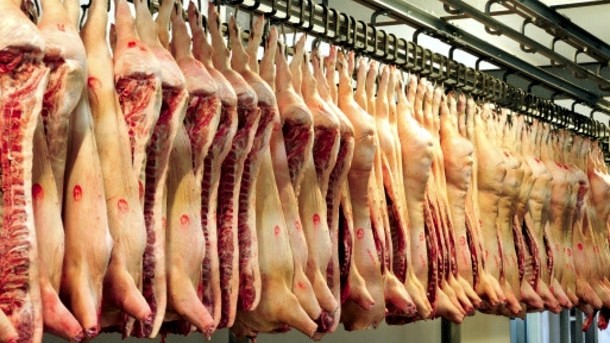Australian pork processor invests $14m to grow exports to SE Asia

Big River Pork, about 75km east of Adelaide, has announced a A$14m (US$10.8m) expansion, which will increase its workforce from 190 to 300 staff.
The plant at Murray Bridge will increase the number of pigs it processes each week from about 11,000 to 16,000.
Big River Pork airfreights between 700 and 900 carcasses a week to Singapore, and a small amount of pork products to other Pacific Rim countries including China.
The company’s chairman Geoff Hampel said while the expansion would mainly service growth in the domestic market, there was room for further increases in exports into Asia.
He said the shipments to Singapore had already grown significantly in the past 18 months.
“Singapore has a limited capacity to take meat but we hope that would to continue to improve,” Hampel said.
“There could be opportunities in other countries in the region.”
The expansion, boosted by a A$900,000 grant from the South Australian government, will make Big River Pork among the biggest facilities of its kind in Australia.
Hampel said the expansion would lead to increased efficiency, allowing South Australian pork to be priced more competitively.
He said pork from Australia was of high quality and had a clean and green reputation.
“It’s very hard to compete with exporting pork at the moment because there’s some very cheap pork coming out of places like the USA, Brazil, Denmark and Canada,” Hampel said.
Trade between South Australia and Southeast Asia was valued at more than A$3.9bn in 2015-16. Major commodities traded included copper, wheat, motor vehicle parts and wine.
More stories from Down Under…
Nano-polluters could be engineered to clean up contaminated land
Controversial nanoparticles that are widely considered a pollutant are now being studied for their range of agricultural uses.
Australian researchers are working on a number of novel uses for engineered microscopic particles, including more efficient fertilisers, agricultural “amendments” and a unique way to clean-up contaminated land.
Engineered nanoparticles are currently used in a range of industrial materials, such as ceramics and advanced polymers, and are also commonly used in the production of household materials, personal care products and clothing.
But they are seen as a pollutant risk if they are able to accumulate in the environment.
With a maximum diameter of just 100 nanometres, it is easy for the particles to be widely dispersed across soil and accumulated by plants.
But researchers have found that the same nanoparticles could also prove beneficial to the growth of plants.
A glasshouse trial conducted by researchers in Adelaide involved exposing rice plants to titanioum and cerium nanoparticles.
One of the team, Elliott Duncan, said that instead of proving toxic to the plants, the nanoparticles aided the growth of the rice plants.
Current laboratory tests have focused on rice plants, but Dr Duncan said the same particles could also be used to benefit other grain crops and horticultural species, with tests expected to begin on wheat later this year.
“There’s a lot of concern in terms of whether engineered nanoparticles are toxic, whether they’re accumulated by plants and what the end effect is for humans and the environment,” he said.
“But we found these particles may actually provide some benefits for the plants, and, if we could harness those, this could be a big deal for the agriculture industry.”
The experiment demonstrated that some nanoparticles had the potential to be used as an agricultural supplement, although Dr Duncan said it was still unclear how exactly these particles helped the growth of plants.
“The mechanisms behind it and predicting whether it is going to occur and how best to harness it is still unknown,” he said.
His team will continue with glasshouse experiments to test the safety and effect of the nanoparticles.
“We’re aware that there are risks involved with nanoparticles, but the reward could also be great too,” he added.
Woolworths relies on food sales to claw way back to respectability
As Woolworths’ fortunes continue to improve, the supermarket chain is now reporting that food sales had been driving its rebound.
For the first-half of its 2017 financial year, sales growth in the group’s Australian food division increased by 2.8%.
Having sold off its haemorrhaging Masters hardware chain, and jettisoned its petrol business, more focus is now on food sales. The proceeds from the sale of the fuel business will be used primarily to strengthen the supermarket’s balance sheet.
The group achieved a net profit after tax of A$725m after selling Masters and its petrol business, but endured a 16.7% fall in its continuing operations.
Chief executive Brad Banducci said the group had made good progress on its five key group priorities.
“Particularly pleasing was the improvement in sales momentum in Australian food, especially in the second quarter,” Banducci said.
“This is on the back of strong Voice of Customer scores and is underpinned by continued growth in customer transactions and, more recently, items per basket,” he said.
Alongside food sales growth of 2.8% for the first-half of the financial year, Woolworths said Christmas-period sales had been the strongest for the year driven by strong comparable transaction growth and improvement in items per basket.
The supermarket’s successful Dan Murphy liquor stores also had a good six months, having delivered sales growth of 4%.
“All retail formats delivered positive comparable sales growth with strong double digit growth from Dan Murphy’s Online,” Banducci said.
In New Zealand, food sales increased by 1.6% over the corresponding period last financial year, though earnings were below last year’s profits.














